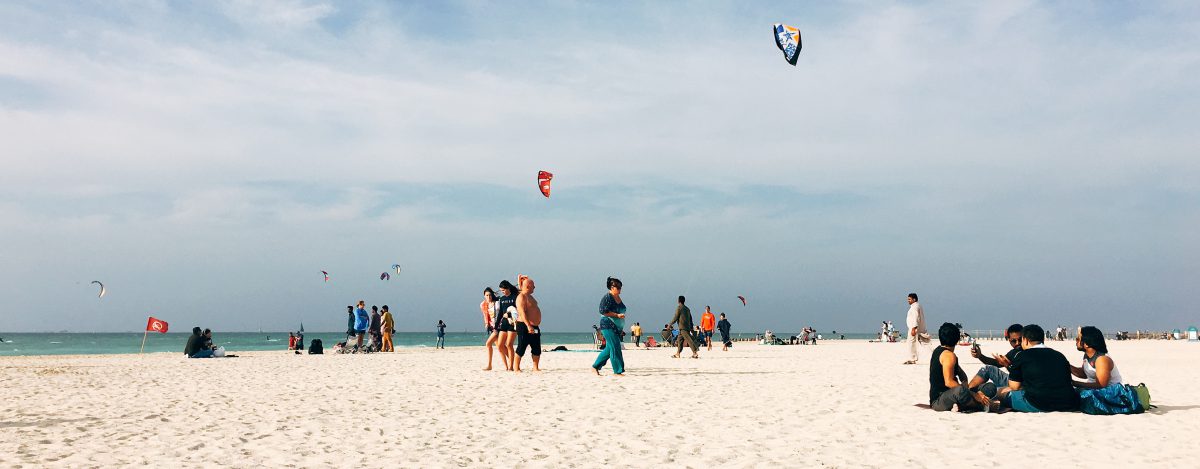I love a thoughtful, well-written article that presents an original point-of-view and makes me think.
Andrew Marantz is a writer for The New Yorker who stopped in Dubai on a 12-hour layover on his way from New York to Sri Lanka with his wife a few years ago. Recently, he wrote an article about his time in Dubai titled “Dubai, the World’s Vegas.” He describes visits to two malls, Ski Dubai, and the top of Burj Khalifa. The essay is supplemented with photographs by a photographer named Ben Thomas.
Yikes. After all these years, was Dubai still being compared to Las Vegas? It was a cultural time warp of an essay. It reminded me almost immediately of another widely circulated article on Dubai from many years ago. Originality, it appeared, was not Mr. Marantz’s objective.
I pulled up A.A. Gill’s now infamous piece for Vanity Fair Magazine from 2011 called “Dubai on Empty.” The similarity between the two articles is uncanny. In his opening lines, Gill references a legendary fable as a lens for understanding Dubai. “The only way to make sense of Dubai is to never forget that it isn’t real. It’s a fable, a fairy tale, like The Arabian Nights.” Marantz also makes a reference to fiction. Specifically, the fictitious life of Walter Mitty. “We passed the Dubai Aquarium and Underwater Zoo, which boasts “the world’s largest collection of sand tiger sharks!,” and a multiplex, where we considered seeing “The Secret Life of Walter Mitty” before deciding that our current experience was already Mitty-esque enough.”
When Gill describes Dubai’s skyline as “the cover of a dystopian science-fiction novella,” Marantz proceeds to reprise the sentiment, adding, “The skyline, if that’s the right word for it, was garishly, unapologetically artificial. The city almost appeared to be a non-place in the literal sense, not just the anthropological sense—more like an architect’s rendering than an actual built environment.”
No article in Dubai is complete without mentioning the construction workers who have built this city. Gill describes the workers as Asian drones, who have “… the tough, downtrodden look of Communist posters from the 30s—they are both the slaves of capital and the heroes of labor.” Marantz concurs, albeit with less flair. He says, “We knew that, for many of the non-Emirati laborers who are largely invisible to the casual tourist, Dubai is worse than a non-place, closer to a dystopia.”
The collective use of identical words and ideas extends beyond publications like The New Yorker and Vanity Fair. While observations about constructions workers are legitimate, accurate, and require urgent attention and immediate rectification by authorities, it is the reduction of a dynamic and rapidly changing city to a tyrannical wonderland that peddles a “harsh form of commerce” that is so pervasive it is now officially cheesy.

And a cover for ulterior motives. Emirati columnist Sultan Al Qassemi wrote a thoughtful reply which he broadcast to his half-a-million strong following on Twitter. He points out, “It’s not the city’s fault that this person chose to visit two malls and a skyscraper in his multi-hour layover.” Right on. That he chose to do so is a reflection of who he is. What I got was a glimpse of a man who really, really wanted to go shopping with his wife. I have no reason to believe he is particularly cultured, or remotely interested in anything like art, history, or even Arabic food.
As a sophomore at Mount Holyoke College many years ago, I learned that Orientalism, or representations of the ‘other’ in stereotypical ways, teaches us more about the cultures that produce it than about ourselves. It is the freezing of this frame, and the multiplication of it, that underpins the success of orientalist discourse and thought. It’s objective is to validate. In this case, it was a deliberate attempt to withhold validation of what Dubai has achieved in such a short period of time. Dubai is no where near perfect, of course. That is hardly relevant. How else do you explain that most of these articles are written by people who have never stepped foot in the country, or are passing through, like Marantz?
Marantz did not bother to experience anything outside the malls because he didn’t want to. While he was successful in recycling stereotypes about Dubai, he inadvertently also reinforced a stereotype about Americans: uncomfortable venturing outside their own comfort zone and confronting the unfamiliar.
Deborah Williams, a professor of literature at NYU Abu Dhabi, wrote an opinion piece for The National called Dubai, New York and lazy cultural stereotypes in response to his article. I would go one step further and argue it’s the continued use of cultural stereotypes that produces lazy journalism. Which makes Marantz a writer of questionable ability. His article is practically a succinct version of Gill’s, structured around the same ideas in a shockingly similar way.
So rest easy, Dubai. It’s not about you. Next time you come across an article like this – by now, you should know there will be plenty more – consider the context of the writer. Start by asking yourself what it says about them, rather than focusing on what it says about you.

Great analysis! I think of professional writers as seeking opportunities to ‘see’ but maybe sometimes they are just meeting a deadline. I urge you to contact both writers and send them a link to this post.
LikeLiked by 1 person
Thanks so much, Pat! I did just that!
LikeLiked by 1 person